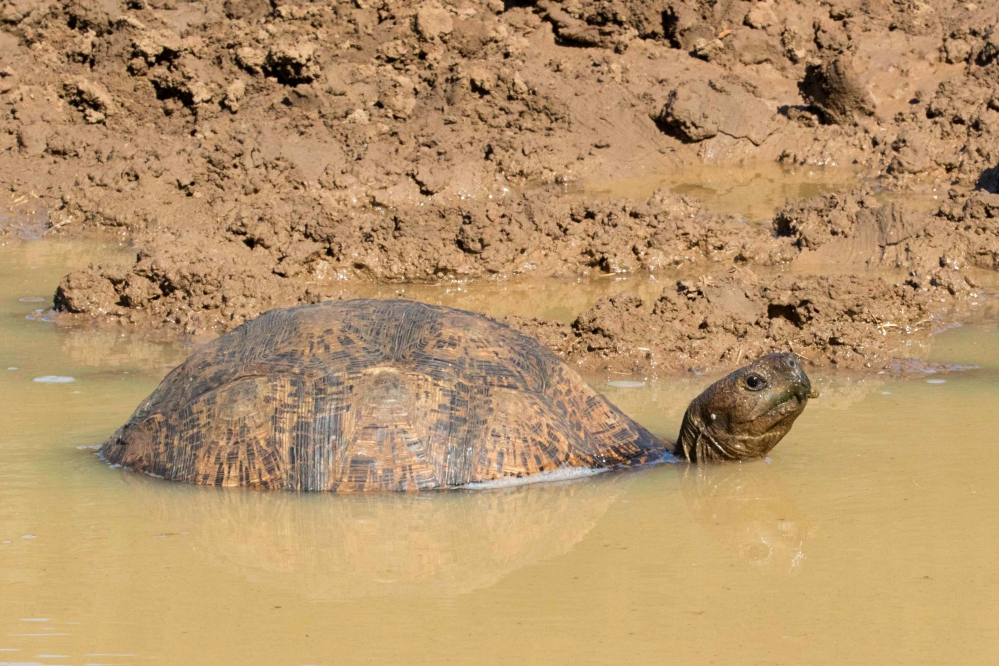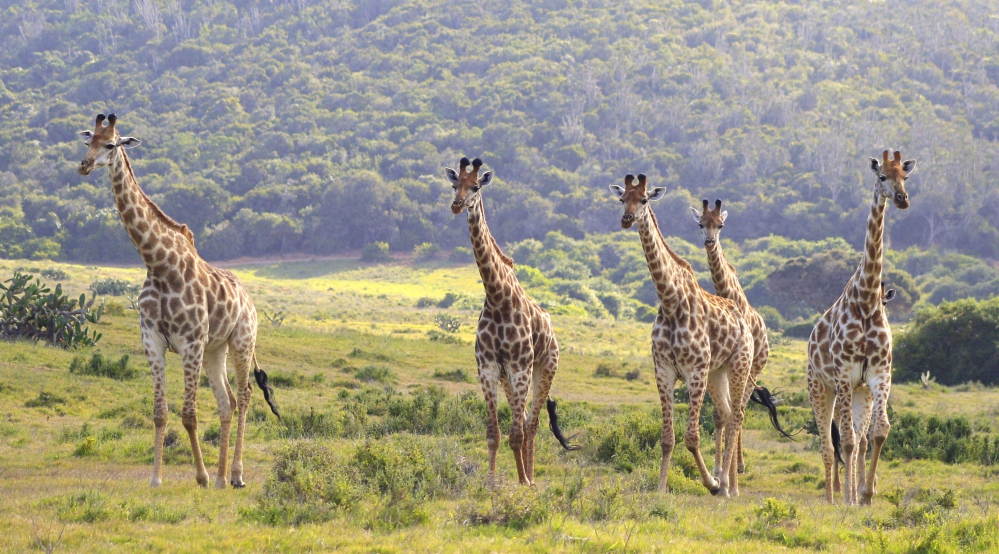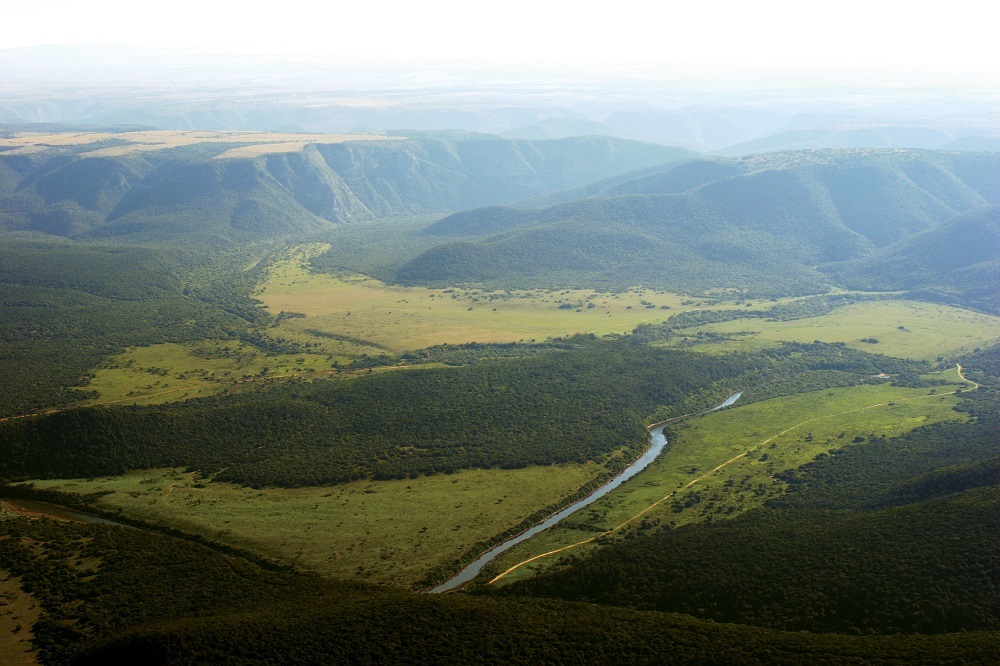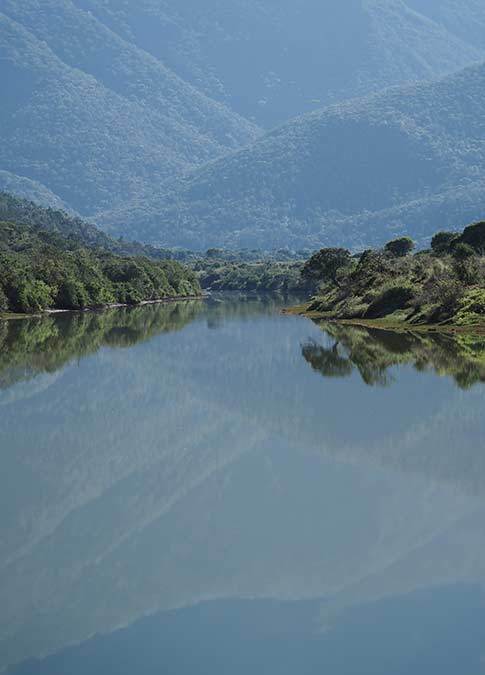Weird South African Animals: BBC Earth
Kariega Game Reserve in South Africa is home to a variety of weird and wonderful animals, birds, arthropods, reptiles and amphibians. They all have their own traits which makes them unique and able to survive in their natural habitats.
The BBC Earth team highlight some of the weirdest South African animals in this video, filmed exclusively at Kariega Game Reserve. We delve into some of the peculiar features of some of these remarkable creatures including the secretary bird, leopard tortoise, African giant millipede and giraffe.
If you would like to see these weird South African animals for yourself, you should book a safari and stay at Kariega Game Reserve. We offer accommodation in comfortable safari lodges and you will enjoy exceptional wildlife experiences.
Weird South African Wildlife: Secretary Bird

With their long legs and peculiar looks, we find secretary birds in the grasslands at Kariega Game Reserve. These birds are part of the raptor family or birds of prey and feed on rodents, snakes, lizards and insects. Instead of flying around to look for their prey they will walk for hours on end to locate their next meal on the ground. They have weird stumpy toes which they can make into a fist to stun their prey with a swift kick to the head. They then usually swallow them whole if they can!
Secretary birds mate for life. They make their large nests out of sticks, branches and other vegetation on top of big bushes or trees. The more prey in an area, the more successful a pair of secretary birds will be in raising their chicks. In the past we've noticed that a pair of secretary birds at Kariega have built two separate nesting sites and had chicks in both. The parents needed to constantly catch prey and fly back to the two nests to feed the chicks. One was even spotted offering a large snake to one of the chicks for lunch!
Leopard Tortoise: Weird South African Reptile

Leopard tortoises are unique and a bit weird in that they don't have the same features as most other tortoises. For example, leopard tortoises are the only tortoises who can swim. They don't have a scute (or keratin plate) at the top of their necks which enables them to lift their heads for air when in water.
The leopard tortoise is the largest tortoise species found in South Africa. This beautiful reptile can grow to around 40 centimeters (16 inches) long and weigh around 13 kilograms (29 pounds). Most of the body weight of a tortoise comes from its shell. Females are usually bigger than males.
An easy way to identify a male or a female leopard tortoise is to gently pick them up and look at their belly. If the belly is flat then it is a female. If it is curved inward then it's a male. The reason for this is that when the male needs to mate with the female then when he mounts her their shells needs to fit snugly or else he would fall off. Watch this video of mating leopard tortoises at Kariega Game Reserve.
When leopard tortoises lay their eggs, they dig a large deep hole and deposit around 24 eggs. After refilling the hole, the female leopard tortoise will stamp down on the earth to make sure the eggs are well covered and as secure as possible. After between 8–15 months the tiny hatchlings will emerge and will need fend for themselves. There is parental care to help them avoid hungry predators and other dangers in the wild.
Leopard tortoises are a member of the Small 5, along with the rhino beetle, the red-billed buffalo weaver, elephant shrew and the antlion. Watch our video about the fascinating antlion.
Giant African Millipede: Another Weird Creature
What is black, has up to 400 legs and recycles natural debris? You guessed it - a shongololo or giant African millipede. These weird little creatures are vital to the environment as they go around feeding on dead vegetation, including leaves and grass, and turning them into new soil.
Millipedes are nocturnal, have poor eyesight, communicate through touch and can taste their surroundings with their bodies!
Millipedes are fortunate in that they don't have many predators. When attacked or scared, millipedes curl into a tight spiral to keep themselves safe. They also give off a horrible smell when they feel threatened. The only animal that has a taste for these smelly critters is a large black and white nocturnal animal called an African civet, but they don't occur as far south as Kariega Game Reserve.
As seen in the BBC Earth video, these creatures are not harmful to humans and can be handled without having to worry about being bitten or stung. A great way to get up close with Africa's weird and wonderful wildlife.
Giraffe: Weird South African Animals

Why are giraffes included in the BBC Wild Lands South Africa video about weird animals? Is it because of their long necks, blue-purple tongues, the fact eating leaves from trees that are riddled with thorns or that they walk around on legs that resemble stilts? All of these attributes make them pretty weird animals, but they all help this incredibly strange looking species to survive where others might not be able to.
Long legs, a long neck and an unusually long flexible tongue all help giraffes to eat things that other animals can't. They have adapted over millions of years to be able to feed where others can't. If there is a drought and there is less food on ground level, giraffes have the upper hand as they can feed on many different levels and can even reach the tops of trees to reach the juicy leaves, fruits and pods.
Giraffes' skin patterns aren't just there to make them look pretty but actually help to regulate their body temperature in the hot African sun. Each dark patch has an intricate network of blood vessels under the skin. The blood that flows through these networks releases heat and so cools the blood and in turn the whole body.
The giraffes favourite food is the acacia or thorn tree. These trees have small but nutritious leaves that are protected by lots of large sharp white thorns. These thorns can only protect the tree to a certain degree as giraffes, and other herbivores, have adapted to eat around the thorns and sometimes even eat the thorns as well!
The acacia tree has developed a fascinating and weird protection method that involves chemicals. When the tree is being “attacked” by something feeding on it or damaging any part of its' structure, the tree will start producing a large amount of a chemical called tannin. The tree can change its' chemical composition in minutes to make its leaves taste bitter by changing the pH level. As the taste changes giraffes will generally move to the next tree to feed and the current tree is safe again for a little while. In this way the acacia trees are trimmed by browsers but never completely stripped bare and killed.

The natural world is full of weird and wonderful phenomenons that makes our natural world so magnificent.
Further BBC Earth South Africa Episodes
The four part BBC Earth South Africa Wild Lands series includes the following episodes:
- Deadliest Predators – Featuring hippos, lions and servals.
- Strongest Animals – Featuring elephants, dung beetles and rhinos.
- Weirdest Animals – Featuring secretary birds, millipedes and giraffes.
- Sneakiest Animals – Featuring black-backed jackals, baboons and zebras.
Be sure to subscribe to our blogs and join our Facebook, Instagram and Twitter communities to make sure you don't miss our updates about the rest of the BBC Earth Wild Lands South Africa episodes.
You are also welcome to submit your wildlife photographs taken at Kariega Game to our 2020 Facebook and Instagram Photo Competition. The prize for the winners is an all-inclusive two night stay for two people at Ukhozi Lodge. Read here to find out how to enter:









